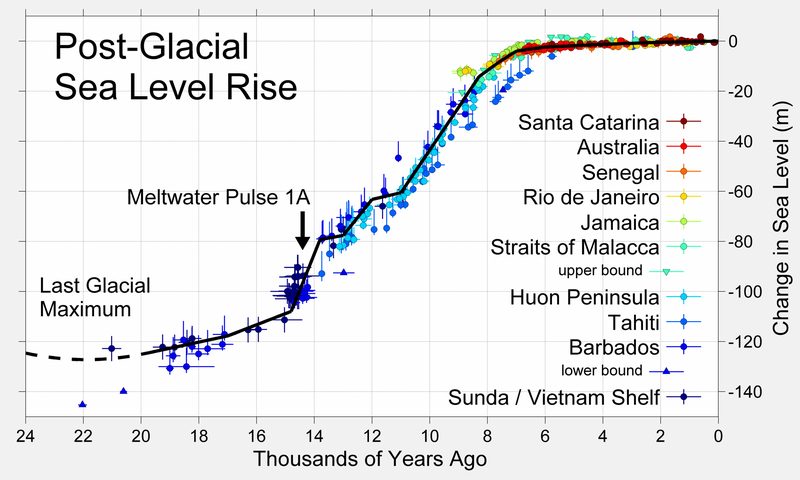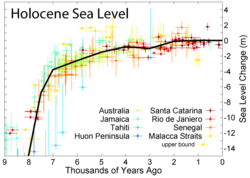Fil:Post-Glacial Sea Level.png

Storlek på förhandsvisningen: 800 × 480 pixlar. Andra upplösningar: 320 × 192 pixlar | 1 024 × 615 pixlar | 1 280 × 768 pixlar | 1 813 × 1 088 pixlar.
Originalfil (1 813 × 1 088 pixlar, filstorlek: 371 kbyte, MIME-typ: image/png)
Filhistorik
Klicka på ett datum/klockslag för att se filen som den såg ut då.
| Datum/Tid | Miniatyrbild | Dimensioner | Användare | Kommentar | |
|---|---|---|---|---|---|
| nuvarande | 19 mars 2019 kl. 01.36 |  | 1 813 × 1 088 (371 kbyte) | Dragons flight | Higher resolution version |
| 25 november 2016 kl. 19.26 |  | 526 × 359 (19 kbyte) | A876 | edited to correct spelling. (also OptiPNG.) | |
| 27 december 2005 kl. 04.20 |  | 526 × 359 (23 kbyte) | Angrense | Sea level variation during the last post-glacial period. Source:English version of Wikipedia. |
Filanvändning
Följande 3 sidor använder den här filen:
Global filanvändning
Följande andra wikier använder denna fil:
- Användande på af.wikipedia.org
- Användande på ar.wikipedia.org
- Användande på ast.wikipedia.org
- Användande på beta.wikiversity.org
- Användande på be.wikipedia.org
- Användande på bg.wikipedia.org
- Användande på bn.wikipedia.org
- Användande på bo.wikipedia.org
- Användande på bs.wikipedia.org
- Användande på ca.wikipedia.org
- Användande på cs.wikipedia.org
- Användande på da.wikipedia.org
- Användande på da.wikibooks.org
- Användande på de.wikipedia.org
- Ozean
- Meeresspiegel
- Präboreal
- Atlantikum
- Subatlantikum
- Meeresspiegelanstieg seit 1850
- Schmelzwasserpuls 1A
- Flandrische Transgression
- Er Lannic
- Doggerland
- Wikipedia:Auskunft/Archiv/2010/Woche 01
- Subboreal
- Boreal (Klimastufe)
- Diskussion:Kontroverse um die globale Erwärmung/Archiv/005
- Benutzer:Zumthie/Fundstücke
- Diskussion:Storegga
- Letzteiszeitliches Maximum
- Allée couverte im Estuaire de la Quillimadec
- Passage Tomb auf Ringarogy Island
- Dolmen von Rostellan
- Allée couverte auf der Île Coalen
- Dolmen von Keroyal
Visa mer globalt användande av denna fil.


